There's no gap when it comes to these generations
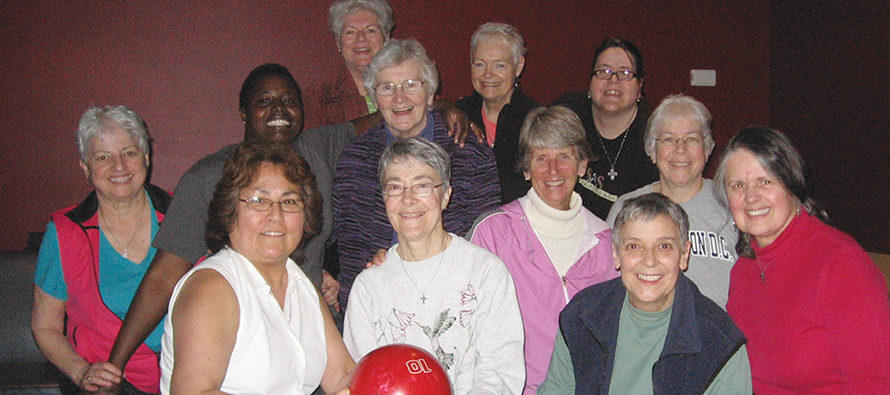
Image: SISTER SUSAN Francois, C.S.J.P. (back row, right) and other Sisters of St. Joseph of Peace celebrate the start of their community assembly with bowling.
It sounds like a Golden Girls-meets-New Girl reality show: A bunch of 20-somethings move in with some 80-somethings and hilarity ensues. Except in this case what ensues is mutual respect, growth, and admiration—and some hilarity, too.
Intergenerational living may account for only about 6 percent of U.S. households, but it’s a fact of life for many in religious life. With smaller numbers of new members joining, younger sisters, brothers, and priests often find themselves in communities where the average age is 60, 70, or even 80.
While such an age gap may be a concern for some, most younger members say that living, working, and praying with older women and men is a blessing. The pros definitely outweigh the cons of intergenerational living, they say, and the inevitable challenges can be addressed by religious orders themselves as well as by gatherings of members of different communities.
Wisdom soup
Sister Susan Rose Francois, C.S.J.P. admits she couldn’t ignore what some communities call “diminishment”—the aging and eventual death of current sisters and the smaller number of younger ones—even while she was feeling called to religious life.
“Before I had actually had the experience of relating to, praying with, and living with women 30 or 40 years older than I am, I couldn’t have imagined it as possible,” said Francois, who was 32 when she entered the Sisters of St. Joseph of Peace eight years ago.
Now she has no trouble listing the many advantages of knowing these older women. First and foremost she loves being able to learn from them. “I am so blessed to be immersed in this soup of wisdom,” said Francois. “I’m living with women who have gone through drastic paradigm shifts and have such amazing perspective. It’s like having your own ready-made experts.”
While women’s religious communities have always had members of various ages, the larger numbers in previous generations meant that sisters tended to stick with their like-aged peers. Today younger and older sisters often relate as peers. “This is a very unique time in religious life,” Francois said. “When [these older members] were in their 30s, they did not go bowling with people in their 70s, as I have.”
With few examples of intergenerational friendships in the wider culture, younger sisters have come to value the depth of such relationships. “You really experience people for who they really are,” said Francois. “You have to build relationships without the easy commonalities, like pop culture. I have friends who have no idea how to use Facebook and yet we have inside jokes with each other. We get to that deeper human connection, which is pretty cool.”
Young at heart
Older doesn’t mean boring, said Father Andy Martinez, O.F.M. Conv., who at 39 is the youngest priest in the Our Lady of Consolation Province of the Conventual Franciscans.
“I didn’t really think about the age difference much, because when I joined I saw a community with a lot of energy, spirit, and enthusiasm,” said Martinez, who lives in Las Cruces, New Mexico. “The guys I came in contact with who were older were still very much in tune with younger people. There was life in the community.”
As the assistant vocation director for his province, he occasionally hears from some younger men that they fear they might be joining a community “to push a wheelchair around,” but he assures them there is much to be gained from living and working with older friars.
“From the outside they may seem older, but they are still young at heart,” he said. “And they are wisdom figures for us. They can teach us a lot. As a younger friar, I’ve learned from their stories. I’m able to share my struggles and joys with them, and they really help me.”
Martinez is also able to meet Conventual Franciscans from Latin America, India, and Africa at biennial assemblies or province retreats. “The younger friars connect at these get-togethers, and we remain in contact through Facebook. Some vacation together or visit one another,” he said.
Sister Maria Victoria Cutaia, 28, said she finds it “rich” to live with people of different ages in her community, the Benedictine Sisters of Perpetual Adoration in Clyde, Missouri, where the eldest sister is 105.
“I learn so much from their stories. You get to hear about how it used to be way before you were born,” said Cutaia, who will make final vows next year. “They have their own unique wisdom and gifts and really teach us a lot.”
The benefits can go both ways. Benedictine Brother Patrick Winbush, O.S.B. was 18 when he entered the Benedictine Abbey in Newark, New Jersey. Now 32 and already in the leadership position of subprior to men twice his age, he sees advantages of intergenerational life for older members, too. “It’s good for them to see younger people who have a desire to live religious life and who have energy and fresh ideas,” he said.
For their part younger members need to be open to learning from those who have “been there, done that,” Winbush said. “Then one day, when you’re a senior member, you can show younger members the ropes.”
Cultures will clash
That’s not to say that the generation gap doesn’t have its challenges for those in religious life. With different energy levels, interests, and even spiritual practices, older and younger sisters, brothers, and priests have to learn to accommodate and adapt to one another.
Differences range from the silly to the serious. Winbush sees it on movie night at the abbey. While he would suggest more contemporary films, the older men in the monastery would prefer movies they grew up with in the 1950s, ’60s, and ’70s. “We try to compromise,” said Winbush. “One night we’ll watch something from my generation, the next time one from the older generation.”
Cultural references certainly vary across generations. Some young sisters joke about the “Holy Hour” of Wheel of Fortune and Jeopardy—T.V. game shows popular among some older nuns. Francois remembers as a novice meeting an older sister who asked her where she was when Pearl Harbor was bombed. “I wasn’t even born when Kennedy was shot!” she said, noting that such moments are “opportunities, but definitely challenging.”
There’s also the issue of technology, with younger sisters more likely to use smart phones and social media. “Of course, we grew up with technology, and a lot of the older sisters did not,” Cutaia said. “But the older sisters sometimes amaze me. One who is in her 80s uses email and is always saying, ‘Look what I found on Google today!’ ”
Other differences revolve around schedules and energy levels. “For many young people life starts at 9 o’clock at night, while for some older members the day ends at 9,” said Sister Sheila Stevenson, R.S.M., a member of the leadership team for New York, Pennsylvania, and the Pacific West for the Sisters of Mercy of the Americas. Both groups need to be respectful of one another.
Though most men and women look for a “fit” when choosing a religious community, they still may find different views of church or prayer-styles across generations. Younger sisters, for example, may be more likely to pray the rosary or attend adoration of the Blessed Sacrament—practices some older sisters associate with the pre-Vatican II church. “There can be some angst around that unless the lines of communication are open,” Stevenson said.
Facilitating such open communication is the goal of the Sisters of Mercy, who are working to prepare the order to receive younger members. Speakers, often young women themselves, educate older sisters about the cultural and spiritual influences of the new generation. Some communities are prepared as “host communities” to receive visiting young women, while “welcoming communities” are more permanent homes for new members. In addition, a mentor program pairs a younger and older sister, while “companioning groups” of six to nine sisters of various ages meet monthly for mutual support.
When Stevenson entered religious life in 1965, two dozen other young women entered with her and the group the previous year was about the same size. While she laments that today’s younger sisters don’t have that built-in peer group, they have instead peers across the country and the world (see box). “My own experience was wonderful, having that many people to relate to and share your experiences with,” she said. “But the beauty of newer members now is their peer group is around the country and around the world. It’s much more diverse.”
It sounds like a Golden Girls-meets-New Girl reality show: A bunch of 20-somethings move in with some 80-somethings and hilarity ensues. Except in this case what ensues is mutual respect, growth, and admiration—and some hilarity, too.
Intergenerational living may account for only about 6 percent of U.S. households, but it’s a fact of life for many in religious life. With smaller numbers of new members joining, younger sisters, brothers, and priests often find themselves in communities where the average age is 60, 70, or even 80.
While such an age gap may be a concern for some, most younger members say that living, working, and praying with older women and men is a blessing. The pros definitely outweigh the cons of intergenerational living, they say, and the inevitable challenges can be addressed by religious orders themselves as well as by gatherings of members of different communities.
| BROTHER PATRICK Winbush, O.S.B. prays with other monks of his Newark Abbey community. |
Sister Susan Rose Francois, C.S.J.P. admits she couldn’t ignore what some communities call “diminishment”—the aging and eventual death of current sisters and the smaller number of younger ones—even while she was feeling called to religious life.
“Before I had actually had the experience of relating to, praying with, and living with women 30 or 40 years older than I am, I couldn’t have imagined it as possible,” said Francois, who was 32 when she entered the Sisters of St. Joseph of Peace eight years ago.
Now she has no trouble listing the many advantages of knowing these older women. First and foremost she loves being able to learn from them. “I am so blessed to be immersed in this soup of wisdom,” said Francois. “I’m living with women who have gone through drastic paradigm shifts and have such amazing perspective. It’s like having your own ready-made experts.”
| MIXING IT UP: Sister Susan Francois, C.S.J.P. (center) loves living with “ready-made experts,” including Sisters Alicia Cavanaugh, C.S.J.P. (front) and Eleanor Maragliano, C.S.J.P. |
With few examples of intergenerational friendships in the wider culture, younger sisters have come to value the depth of such relationships. “You really experience people for who they really are,” said Francois. “You have to build relationships without the easy commonalities, like pop culture. I have friends who have no idea how to use Facebook and yet we have inside jokes with each other. We get to that deeper human connection, which is pretty cool.”
Young at heart
Older doesn’t mean boring, said Father Andy Martinez, O.F.M. Conv., who at 39 is the youngest priest in the Our Lady of Consolation Province of the Conventual Franciscans.
| SISTER MARIA Victoria Cutaia, O.S.B. learns a lot from the older sisters in her community. |
As the assistant vocation director for his province, he occasionally hears from some younger men that they fear they might be joining a community “to push a wheelchair around,” but he assures them there is much to be gained from living and working with older friars.
“From the outside they may seem older, but they are still young at heart,” he said. “And they are wisdom figures for us. They can teach us a lot. As a younger friar, I’ve learned from their stories. I’m able to share my struggles and joys with them, and they really help me.”
Martinez is also able to meet Conventual Franciscans from Latin America, India, and Africa at biennial assemblies or province retreats. “The younger friars connect at these get-togethers, and we remain in contact through Facebook. Some vacation together or visit one another,” he said.
Sister Maria Victoria Cutaia, 28, said she finds it “rich” to live with people of different ages in her community, the Benedictine Sisters of Perpetual Adoration in Clyde, Missouri, where the eldest sister is 105.
“I learn so much from their stories. You get to hear about how it used to be way before you were born,” said Cutaia, who will make final vows next year. “They have their own unique wisdom and gifts and really teach us a lot.”
| FRIAR ANDY Martinez, O.F.M. Conv. (at end of table) talks with members of his community during a workshop: (from left) Conventual Franciscan Friars Vincent Petersen (whose artwork was featured in the VISION article “Inspired images,” available online), Valentine Jankowski, and John Stowe. |
For their part younger members need to be open to learning from those who have “been there, done that,” Winbush said. “Then one day, when you’re a senior member, you can show younger members the ropes.”
Cultures will clash
That’s not to say that the generation gap doesn’t have its challenges for those in religious life. With different energy levels, interests, and even spiritual practices, older and younger sisters, brothers, and priests have to learn to accommodate and adapt to one another.
Differences range from the silly to the serious. Winbush sees it on movie night at the abbey. While he would suggest more contemporary films, the older men in the monastery would prefer movies they grew up with in the 1950s, ’60s, and ’70s. “We try to compromise,” said Winbush. “One night we’ll watch something from my generation, the next time one from the older generation.”
| GIVING VOICE TO YOUNGER WOMEN RELIGIOUS An intercommunity group of women religious under the age of 50 called Giving Voice is where Sister Susan Rose Francois has found other sisters her own age. Giving Voice, giving-voice.org, has a members-only Facebook page of 150 young women and hosts an annual retreat for sisters in their 20s and 30s. “Just having that opportunity to gather and pray with other women my age and not have to ‘translate’ at all was very important to me,” said Francois. “Even the idea that there were enough younger sisters to have an organization like this gave me hope.” By bringing together young women from various congregations, Giving Voice also encourages collaboration among orders with different charisms or guiding spirits. “Giving Voice is really building those connections that will help us through the unknown future,” said Francois. “I think the Holy Spirit is very sneaky.” |
There’s also the issue of technology, with younger sisters more likely to use smart phones and social media. “Of course, we grew up with technology, and a lot of the older sisters did not,” Cutaia said. “But the older sisters sometimes amaze me. One who is in her 80s uses email and is always saying, ‘Look what I found on Google today!’ ”
Other differences revolve around schedules and energy levels. “For many young people life starts at 9 o’clock at night, while for some older members the day ends at 9,” said Sister Sheila Stevenson, R.S.M., a member of the leadership team for New York, Pennsylvania, and the Pacific West for the Sisters of Mercy of the Americas. Both groups need to be respectful of one another.
Though most men and women look for a “fit” when choosing a religious community, they still may find different views of church or prayer-styles across generations. Younger sisters, for example, may be more likely to pray the rosary or attend adoration of the Blessed Sacrament—practices some older sisters associate with the pre-Vatican II church. “There can be some angst around that unless the lines of communication are open,” Stevenson said.
Facilitating such open communication is the goal of the Sisters of Mercy, who are working to prepare the order to receive younger members. Speakers, often young women themselves, educate older sisters about the cultural and spiritual influences of the new generation. Some communities are prepared as “host communities” to receive visiting young women, while “welcoming communities” are more permanent homes for new members. In addition, a mentor program pairs a younger and older sister, while “companioning groups” of six to nine sisters of various ages meet monthly for mutual support.
When Stevenson entered religious life in 1965, two dozen other young women entered with her and the group the previous year was about the same size. While she laments that today’s younger sisters don’t have that built-in peer group, they have instead peers across the country and the world (see box). “My own experience was wonderful, having that many people to relate to and share your experiences with,” she said. “But the beauty of newer members now is their peer group is around the country and around the world. It’s much more diverse.”
Tags
Related
- Questions you’ll be glad you asked
- What monastic mystics got right about life
- Religious communities embrace diverse members
- How my parents responded when I became a brother
- Vocation Basics: You are already called—Message to youth from Pope Francis
- Meet the parents
- Charism: The gift that shapes lives
- What our vows mean
- Discover five treasures of religious life
- Religious making a difference Read More
Most Viewed
- Find your spirituality type quiz
- Questions and answers about religious vocations
- Celibacy quiz: Could I be a nun? Could I be a brother? Could I be a priest?
- Resources for older discerners or those with physical and developmental differences
- About Vocation Network and VISION Guide


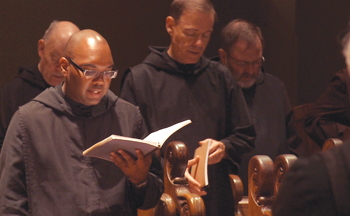
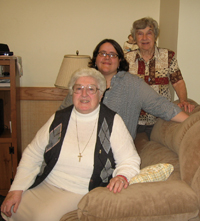
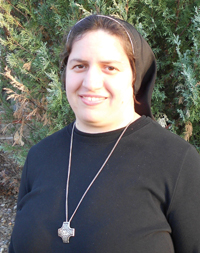
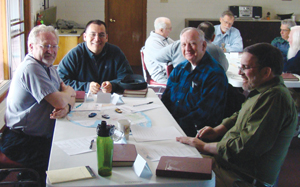
 Heidi Schlumpf is an associate professor of communication at Aurora University in the Chicago suburbs and the author of While We Wait: Spiritual and Practical Advice for Those Trying to Adopt (ACTA).
Heidi Schlumpf is an associate professor of communication at Aurora University in the Chicago suburbs and the author of While We Wait: Spiritual and Practical Advice for Those Trying to Adopt (ACTA).